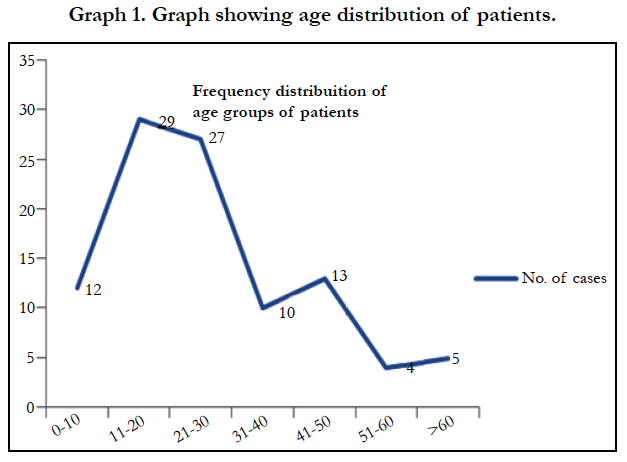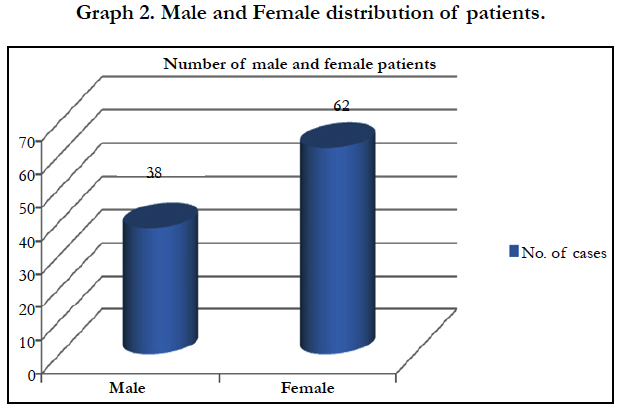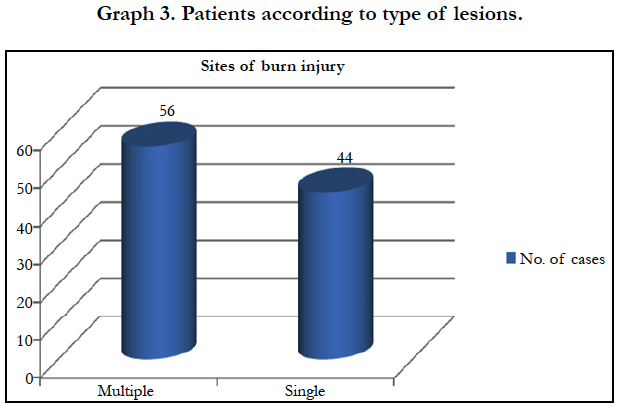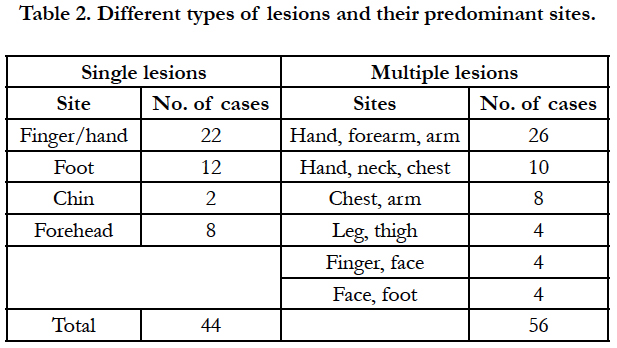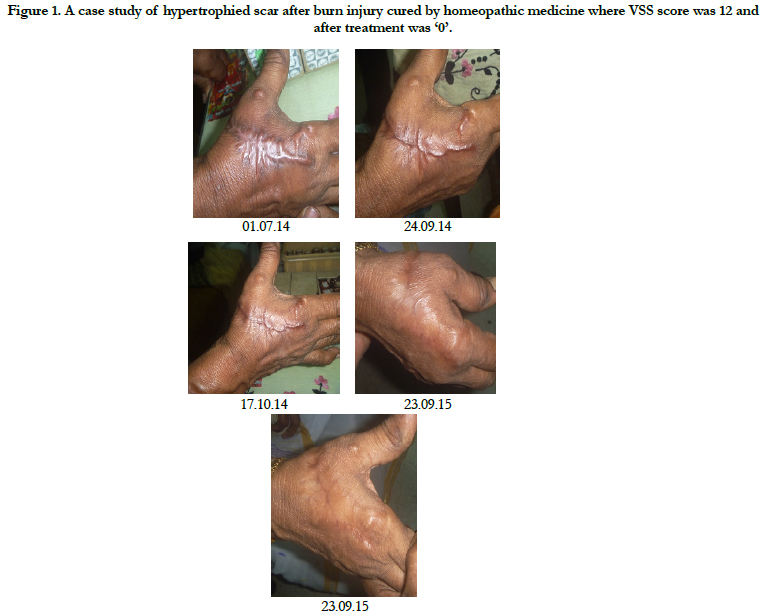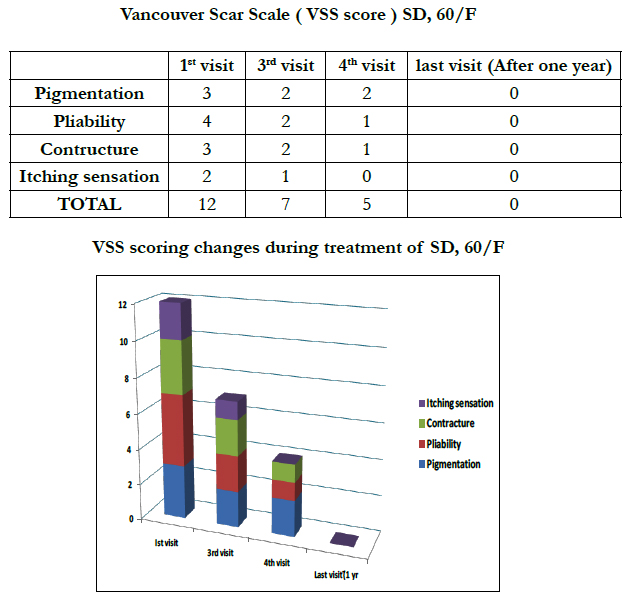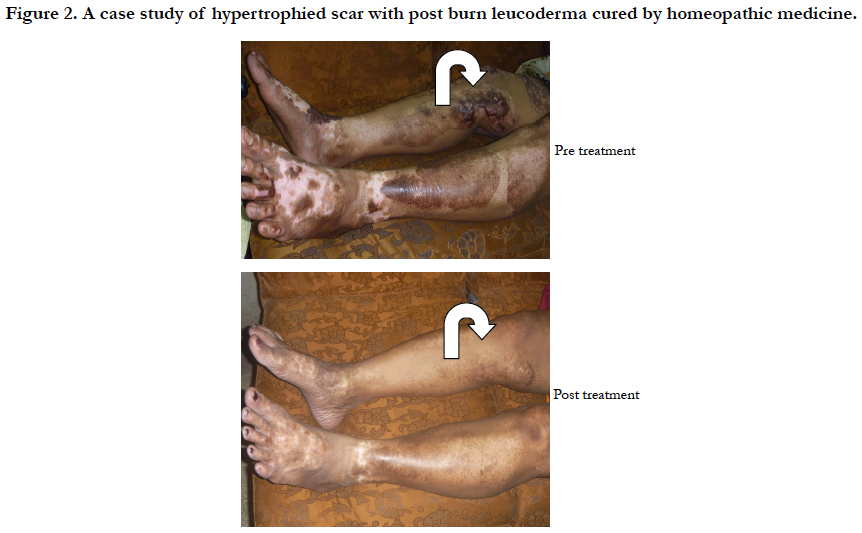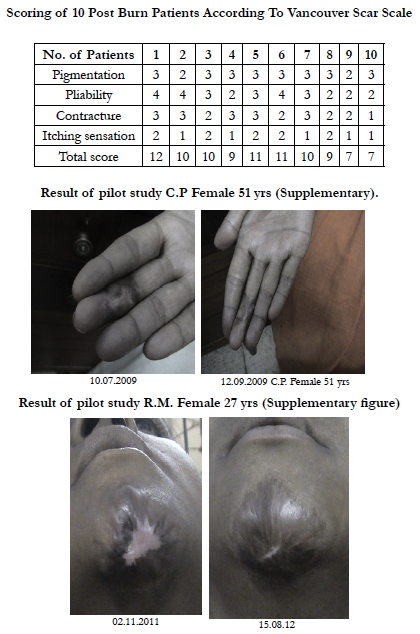Resolution of Some Burn Complications by Homeopathic Medicines
Shraddhamayananda S*
Monk in Charge of Medical Unit at Belur Math, Ramakrishna Mission Charitable Dispensary, Belur Math, Howrah, West Bengal, India.
*Corresponding Author
Swami Shraddhamayananda,
Monk in Charge of Medical Unit at Belur Math,
Ramakrishna Mission Charitable Dispensary,
Belur Math, Howrah, 711202, West Bengal, India.
Tel: 91- 9143415986
E-mail: gopalmj.belurmath@gmail.com
Received: November 20, 2017; Accepted : December 29, 2017; Published: December 30, 2017
Citation: Shraddhamayananda S. Resolution of Some Burn Complications by Homeopathic Medicines. Int J Clin Dermatol Res. 2017;5(8):154-159. doi: dx.doi.org/10.19070/2332-2977-1700035
Copyright: Shraddhamayananda S© 2017. This is an open-access article distributed under the terms of the Creative Commons Attribution License, which permits unrestricted use, distribution and reproduction in any medium, provided the original author and source are credited.
Abstract
Burn injuries often lead to contracture, hypertrophic changes and hypopigmentation, which not only cause serious disfigurement and functional impairment but are also associated with social isolation, psychosis and depression. This is largely because most of the patients particularly of developing countries could not afford the cost of the conventional sophisticated treatment schedule. Thus in this study I opted to test the efficacy of one homeopathic medicine, which is of extremely low cost, so that general population may follow this new treatment if found effective. The medicine Graphites was selected by me based on my previous experience on treatment of burn cases. This single medicine was used to treat 100 post-burn scar cases with proper case taking, consent and the Vancouver Scar Scale (VSS) scoring, During follow up of the patients, 84 patients showed significant improvement of VSS scoring followed by cure of most of the cases, while only 16 cases did not show any significant change after treatment. Thus my appeal to those patients who remain untreated due to want of money, should follow this simple treatment protocol, and I also assure them that this medicine has got no side effect.
2.Introduction
3.Materials and Methods
3.1 The Patients and the Method of Treatment
4.Results
5.Acknowledgement
6.References
Keywords
Post-Burn Scar; Homeopathic Medicine Graphites; A New Remedy of Burn Complications.
Introduction
In recent years survival from burn injuries has improved a lot decreasing mortality rate of about 6.0 million annually affected people from burn injury throughout the globe. However, still there is a grim scenario of the treatment results of burn complications particularly the post-burn scar [1]. Healed burn patients often have scars with varying degrees of functional and aesthetic components. Post-burn scars occur even in patients having all modern treatments because they depend upon the depth of burn injury. It is commonly found that all deeper burns (2nd degree deep dermal and full thickness) usually heal by scarring [2]. A proper understanding of the burn wound healing is necessary for appropriate management of the acute burn wound as well as preventing or minimizing the complications [3].
As there is no specific treatment of the complications of burn injury, a long term suffering is almost inevitable in all these patients with scar, hypopigmentation, contracture, hypertrophic changes, keloid formation etc. Manifold treatment modalities like massage, use of moisturizing agents, pressure garments, silicone sheeting, topical as well as parenteral steroids, and experimental therapies such as interferon, Skin grafting and different types of flaps are used for the reconstruction of contractures [4] including use of allograft acellular human dermal matrix [5] are there, but often they fail to give complete remission. Dyspigmentation like hypopigmentation in the scars due to disturbance of melanogenesis [6] as well as contractures usually lead to social humiliation and sometimes isolation of the affected person [7]. Laser therapy (vascular- specific pulsed dye laser, ablative fractional CO2 laser) is also an important step to treat hypopigmented scars where it increases pigment formation in melanosomes. However, laser therapy is a multistep and painful procedure. Surgical excision, dermabration and application of melanocytes in the affected area, application of autologous cells, adult stem cells, adipose tissue, fetal cells, embryonic stem cells, platelets, placental and amniotic fluid cells are used with variegated results [8-15]. In this study homeopathic medicines “graphites 200” was tested to find out if there is any efficacy of it in resolution of post-burn scar. The homeopathic medicine Graphites is prepared by serially pulverizing pure graphite powder with lactose and to required ultra dilution potency of the medicine, details of which are given in homeopathic pharmacopeia. The possible efficacy of Graphites in post-burn scar came to my mind during treatment of a patient with eczema with this medicine, during follow up of that patient I found that a postburn scar present on his body was cured. I started a pilot study with 5 patients (Table 1) of post burn complications with this drug and the result was excellent. Then we planned a master study with 100 such patients who were with this medicine (graphitis 200), along with a control group of 10 patients treated only with placebo containing the vehicle of the original medicine. Details of our findings are given in the following sections.
Table 1. Result of the pilot study with 5 patients, the final experiment was based on the result of this pilot study.
A total of 100 patients were enrolled in this study following our Institutional Ethical Committee guidelines of inclusion and exclusion criteria. Most of them aged between 10 to 30 years (66.7%, Graph 1), with slightly higher (62%, Graph 2) partaking of female patients. There were also 10 control cases (4 male, 6 female) in this study those were given placebo and followed monthly for one year to see if there was any change. Most of them (Table 2. Graph 3) presented with deep lesions (84.6%), The Vancouver Scar Scale (VSS), an internationally accepted scale for assessing scars, was used during pre and post-treatment assessment, average scoring was 8, scoring chart of one patient (Figure 1) is given . In 56 cases (56%) there were multiple lesions and in 44 cases (44%) the lesions were single. There was gap of 6 months to 5 years after the actual burn injury when the patients intended to attend our charitable clinic. Inclusion criteria of the enrolled patients were absence of local or common systemic evidences of acute inflammation, there was no associated local or systemic disease and general health parameters were within normal limits. Exclusion criteria were evidences of acute inflammation, presence of any other associated disease, general health parameters were not within normal limits and pregnancy in women subjects. Written informed consent was taken from all patients and from parents in minor subjects following the approved consent form of the Institutional Ethical Committee which given approval of this study. Follow ups of all the patients were done by consultant dermatologists attached to the medical unit who assessed the improvements and given final opinion regarding complete remission of the disease.
The homeopathic medicine “Graphites 200” (ultra diluted graphite) was used for resolving the scar tissue following homeopathic Materia Medica. This medicine was selected according to clinical experience during treatment of other diseases by this medicines and observing beneficial effects of this medicine on any burn injury, if this was associated with the original disease. These medicine was prepared following Indian Pharmacopeia and was purchased from an authorized company “HAPCO” (Hahnemann Publishing Co. Pvt. Ltd, Kolkata, India). The medicine was prepared by the company according to standard procedures mentioned in Homeopathic Pharmacopoeia of India (Ministry of Health, Government of India, 1971, document 1:1). Homeopathy medicines are prepared from plants, animal tissue, microorganisms, inorganic and organic chemicals in ultra diluted concentrations. Homeopathic principle is based on the theory that bioactive potency is more in lower concentrations of matter and therefore, very small quantity would suffice to readjust altered homeostasis in human body. The homeopathic medicine Graphites is prepared by serially pulverizing pure graphite powder with lactose upto 6 dilution then with 60% Alcohol. and was given once in 2 weeks period to all the cases. This schedule of treatment was followed in all the cases irrespective of differences of age, sex, degree of lesion, because these medicines are completely free of any side effects due to ultra dilutions.
Results
Among100 patients there was complete remission in 84(84%) cases. In the remaining 16 cases, there was no significant changes. After beginning of treatment earliest reaction was noted within two weeks and complete remission which was observed in 84 cases occurred in between 6 months and 4 years. One typical case with post-burn complications have been shown in serial photographs from beginning of treatment to complete recovery (Figure 1.) of which initial score was 12 but at the end of treatment it came into almost 0 level and pre-treatment post-treatment photographs of another case is also shown (Figure 2). Among 16 non responders, 12 patients had some improvement (~30%) and remaining 4 patients did not continue treatment after second visits. In control cases the score was the same in the beginning and the end.
Figure 1. A case study of hypertrophied scar after burn injury cured by homeopathic medicine where VSS score was 12 and after treatment was ‘0’.
Figure 2. A case study of hypertrophied scar with post burn leucoderma cured by homeopathic medicine.
Discussion
A vast spectrum of injuries can occur from burn, from trivial to some severe injuries. Burn can damage multiple organs, but by far the most common organ involved is the skin. Treatment and prognosis of burn depends on depth of burn. In first degree burn only the epidermis is involved. Underlying pathology shows vasodilatation and sub-dermal edema. In second degree burn involvement of epidermis and superficial dermis is seen. Histopathology shows blister formation and necrosis of epidermis. In third and fourth (full thickness) degree burn there is both involvement of epidermis and dermis. In histological observations there are loss of epidermis, dermis and dermal appendages. They are replaced by collagen deposition and fibrosis. A heal burn patient may be left with scar and having various degree of functional and aesthetic components.
Deep burn heals by scaring and often results in hypopigmentation, which has similar psychological impact on the patient as that of vitiligo. This not only causes severe disfigurement, at times this is associated with functional impairment as well. It has been observed that these changes can induce serious magnitude of depression. As of now surgical management in the form of tissue grafting has been accepted to treat post-burn hypopigmentation. It can be minimized by various physical therapy and plastic surgical procedure but not eliminated completely. The appearance of even the best split – skin grafted areas and the donor sites of these grafts is also a “scar” by the patients’ definition of a scar. So, surgical options are limited, expensive, and often the results are sub optimal and beyond the reach of a large number of patients affected with this. On the other hand, this study shows very encouraging results by homoeopathic medicines, which is not only cost effective but it could dissolve fibrosis and restore the pre injury status in most of the cases.thus this method of treatment is specifically effective on post burn scar and other complications of burn injury.
Acknowledgement
I hereby acknowledge The President, Ramakrishna Mission for giving me permission to publish this paper. I also thank all doctors and paramedical staff of our Medical Unit for helpful suggestions.
References
- Sheridan RL. Burn care: results of technical and organizational progress. JAMA. 2003 Aug 13;290(6):719-22. PMID: 12915409.
- Hawkins HK, Pereira CT. Pathophysiology of the burn scar. 3rd ed. In:Herndon DN, editor. Total Burn Care. Philadelphia:Saunders Elsevier; 2007. p.608-19.
- Cohen IK, Diegelmann RF, Lindblad WJ. Wound Healing: Biochemical and clinical aspects. Philadelphia:W.B. Saunders Co;1992. p. 926.
- Fine NA, Mustoe TA.Wound Healing. 3rd ed. In:Greenfield LJ, Mulholland MW, Oldham KT, Zelenock GB, Lillemoe KD, editors. Surgery: Scientific Principles and Practice. Philadelphia:Lippincott Williams and Wilkins Publishers;2001. p.431-449.
- Hudson DA, Renshaw A. An algorithm for the release of burn contractures of the extremities. Burns. 2006 Sep;32(6):663-8. Epub 2006 Aug 14. PMID: 16905261.
- Wainwright DJ, Bury SB. Acellular Dermal Matrix in the Management of the Burn Patient. Aesthet Surg J. 2011 Sep;31(7 Suppl):13S-23S. PMID: 21908820.
- Tyack ZF, Pegg S, Ziviani J. J. Postburn dyspigmentation: its assessment, management, and relationship to scarring – a review of the literature. J Burn Care Rehabil. 1997 Sep-Oct;18(5):435-40. PMID: 9313126.
- Wisely JA, Hoyle E, Tarrier N, Edwards J. Where to start? Attempting to meet the psychological needs of burned patients. Burns. 2007 Sep;33(6):736-46. Epub 2007 May 17. PMID: 17499929.
- Sheridan RL, Choucair RJ. Acellular allogenic dermis does not hinder initial engraftment in burn wound resurfacing and reconstruction. J Burn Care Rehabil. 1997 Nov-Dec;18(6):496-9. PMID: 9404982.
- Bianco P, Robey PG. Stem cells in tissue engineering. Nature. 2001 Nov 1;414(6859):118-21. PMID: 11689957.
- Kaviani A, Perry TE, Dzakovic A, Jennings RW, Ziegler MM, Fauza DO. The amniotic fluid as a source of cells for fetal tissue engineering. J Pediatr Surg. 2001 Nov;36(11):1662-5. PMID: 11685697.
- Kaviani A1, Perry TE, Barnes CM, Oh JT, Ziegler MM, Fishman SJ, et al. The placenta as a cell source in fetal tissue engineering. J Pediatr Surg. 2002 Jul;37(7):995-9; discussion 995-9. PMID:12077757.
- Jones I, Currie L, Martin R. A guide to biological skin substitutes. Br J Plast Surg. 2002 Apr;55(3):185-93. PMID: 12041969.
- Shakespeare PG. The role of skin substitutes in the treatment of burn injuries. Clin Dermatol. 2005 Jul-Aug;23(4):413-8. PMID: 16023937.
- De Coppi P1, Bartsch G Jr, Siddiqui MM, Xu T, Santos CC, Perin L, et al. Isolation of amniotic stem cell lines with potential for therapy. Nat Biotechnol. 2007 Jan;25(1):100-6. Epub 2007 Jan 7. PMID: 17206138.


